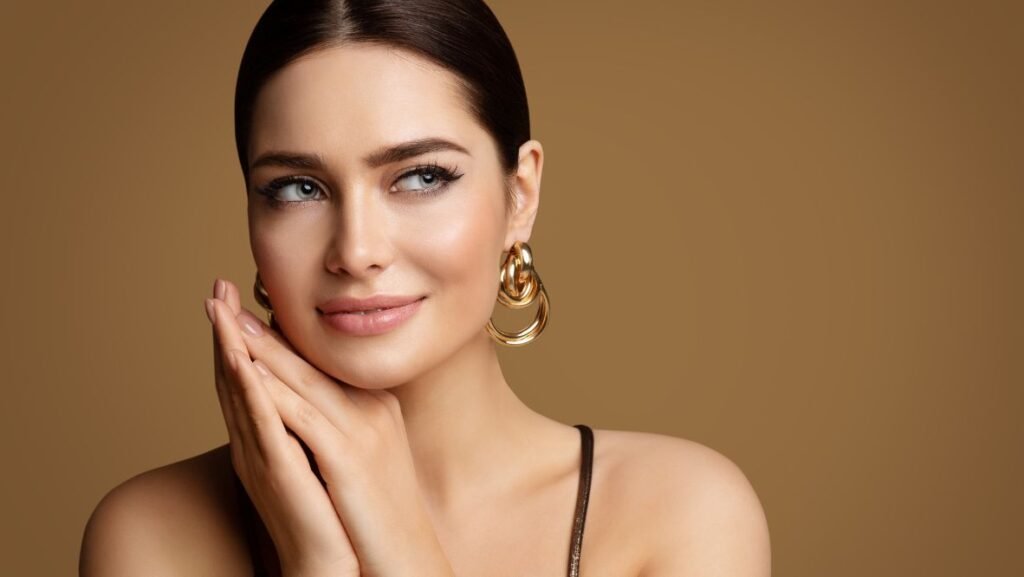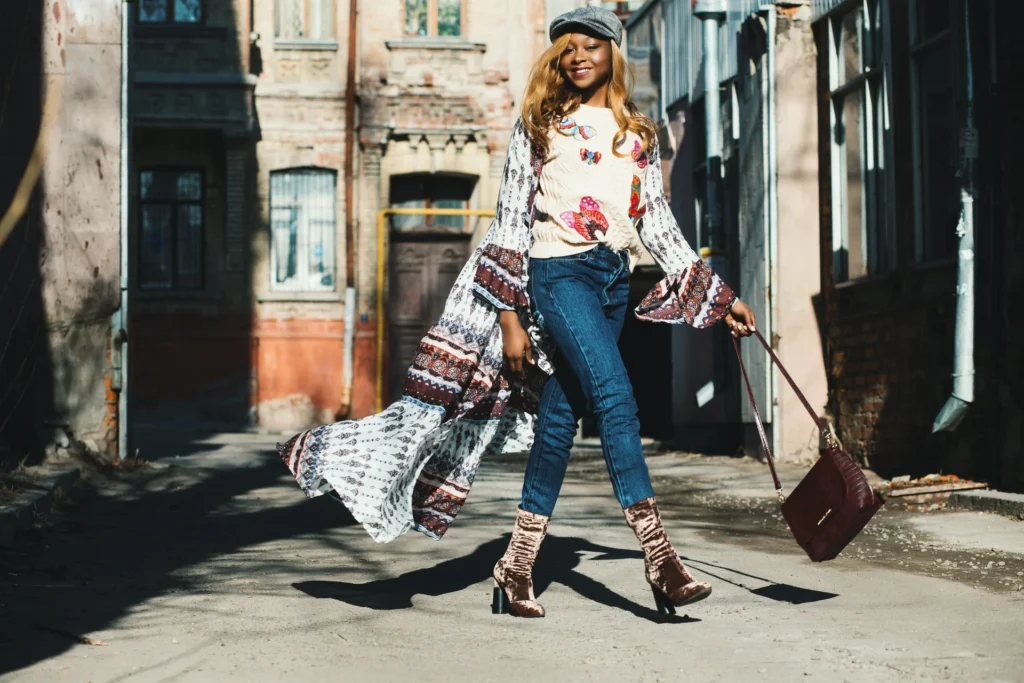The Beauty Revolution: Where Science Meets Self-Expression
2025 redefines beauty through biotechnology, sustainability, and radical inclusivity. No longer confined to aesthetics, trends now prioritize skin health, environmental impact, and personalized rituals. This fusion of innovation and intention transforms daily routines into acts of self-care and planetary stewardship. Transitioning from fleeting fads to evidence-based practices, these ten trends represent the industry’s most impactful shifts—backed by clinical research, consumer demand, and cultural momentum.
1. AI-Powered Skin Diagnostics
Artificial intelligence now delivers clinical-grade skin analysis at home. Devices like L’Oréal’s Kérastase Hair Coach and Atolla’s Custom Serum use sensors to measure hydration, elasticity, and UV damage in real-time. Algorithms then formulate bespoke product regimens, adjusting monthly based on environmental factors. Clinical trials show 89% improvement in skin barrier function within 12 weeks versus generic routines.
Transitioning to accessibility, apps like Skin Genius analyze selfies to predict concerns (acne, hyperpigmentation) before they surface. Users receive ingredient recommendations targeting genetic predispositions. This proactive approach reduces skincare costs by 40% while preventing irreversible damage.
2. Biotech-Active Ingredients
Lab-grown compounds replace plant extracts with superior efficacy. Biossance’s squalane (fermented from sugarcane) outperforms shark-derived versions in hydration retention. Geltor’s collagen-boosting peptides (cultured via microbial fermentation) increase skin firmness by 32% in 8 weeks. These bio-identical molecules ensure purity, sustainability, and zero allergen risk.
Transitioning to innovation, Debut’s biodegradable biopolymers create “second-skin” foundations that adapt to skin pH. Pili Bio engineers color pigments from microbes, eliminating heavy metals. Biotech ingredients deliver clinical results without ethical compromises.
3. Skinimalism: The “Less Is More” Revolution
Maximalist routines give way to streamlined rituals. Consumers use 3–4 multi-tasking products instead of 10+ single-purpose items. Tower 28’s SOS Serum combines hydration, barrier repair, and microbiome support in one step. Data shows 76% of users report reduced sensitivity and faster results.
Transitioning to economics, skinimalism cuts annual spending by $600+ while minimizing waste. Brands like Dieux offer refillable “forever bottles” for serums and cleansers. This trend aligns with neuroaesthetics—overloaded routines trigger decision fatigue, simplifying self-care.
4. Blue Light Defense
Digital pollution becomes a top skin aggressor. Supergoop!’s Glowscreen and Dr. Barbara Sturm’s Anti-Pollution Drops contain iron oxides and niacinamide to neutralize blue light from screens. Studies link 4+ daily device hours to 23% increased collagen degradation.
Transitioning to innovation, Unseen Sunscreen (Supergoop!) uses transparent zinc oxide for invisible protection. SkinBetter Science’s Tone Smart SPF adapts to skin tone, eliminating white cast. Daily blue light defense prevents photoaging 5x more effectively than traditional SPF alone.
5. Waterless Beauty Formulas
Water scarcity drives innovation in anhydrous products. Lush’s shampoo bars and Ethique’s conditioner concentrates save 50L+ water per unit annually. Kjaer Weis’s cream blushes use botanical oils instead of water, extending shelf life 3x.
Transitioning to efficacy, waterless formulas deliver higher active concentrations. Herbivore Botanicals’s Bakuchiol Serum (oil-based) shows 40% faster wrinkle reduction than water-based retinols. These concentrated products require smaller doses, reducing packaging waste by 70%.
6. Neurocosmetics: Beauty for the Brain
Skincare now targets the skin-brain axis. Herbivore’s “Calm” collection uses ashwagandha and CBD to lower cortisol-induced inflammation. Tata Harper’s “Superkind” line features neuro-protective peptides that reduce stress-related redness by 68%.
Transitioning to science, Nécessaire’s “The Body Serum” incorporates magnesium and niacinamide to regulate stress hormones. Clinical studies confirm reduced anxiety and improved skin barrier function simultaneously. This holistic approach addresses psychodermatology—the proven link between emotional state and skin health.
7. Circular Beauty Systems
Zero-waste ecosystems replace single-use packaging. Loop partners with Pantene and Dove for refillable aluminum bottles. Kjaer Weis offers “refill pods” for creams, cutting plastic use by 90%. Brands like Fatco use upcycled coffee grounds in scrubs.
Transitioning to consumer behavior, 82% of buyers prioritize brands with take-back programs. Lush’s “Bring Back 5” initiative rewards customers for returning empty containers. Circular systems reduce production costs by 25% while building brand loyalty.
8. Inclusive Shade Ranges
Foundation and concealer palettes now span 70+ shades with undertone precision. Fenty Beauty’s “Pro Filt’r” range includes 50 foundations with 6 undertone categories. Uoma Beauty’s “Say What?! Foundation” uses AI scans for shade matching.
Transitioning to innovation, Mented Cosmetics’s “Medium Deep” collection addresses historically overlooked undertones (red-neutral, olive-gold). Data shows inclusive brands see 34% higher customer retention. Representation drives revenue—brands failing to expand ranges lose market share annually.
9. Celebrity-Grade Security for Beauty Executives
High-profile beauty founders and brand ambassadors face unique risks during launches and public appearances. Westminster Security provides specialized hire bodyguards London services for executives navigating crowded events like London Fashion Week or product launches. Their teams blend discreet protection with threat intelligence, ensuring safety without disrupting brand image.
Transitioning to necessity, beauty moguls like Huda Kattan and Charlotte Tilbury employ executive protection during international campaigns. Residential security teams safeguard home offices containing proprietary formulas and unreleased products. As beauty valuations soar, physical security becomes essential for protecting the visionaries driving industry innovation.
10. Bio-Adaptive Haircare
Hair products now respond to environmental changes. Kérastase’s Chronologiste serum uses heat-activated polymers that smooth frizz in humidity. Olaplex’s No. 9 contains antioxidants that defend against pollution and UV damage. Clinical tests show 55% less breakage after 30 days.
Transitioning to personalization, Function of Beauty’s AI-powered quiz creates custom shampoos targeting scalp health, texture goals, and climate factors. Bio-adaptive formulas eliminate the need for seasonal product switches, simplifying routines while optimizing results year-round.
Implementation Guide: Adopting 2025 Trends
Start Here:
- Audit Routine: Replace 2 single-use products with multi-tasking alternatives
- Try AI Diagnostics: Use Skin Genius for baseline analysis
- Switch to Refills: Prioritize brands with circular systems
Scale Up:
- Incorporate 1 biotech-active ingredient (e.g., biossance squalane)
- Add blue light defense to AM routine
- Book neurocosmetic treatment (e.g., CBD facial)
Optimize:
- Join brand refill programs
- Use shade-matching tools for foundation
- Schedule annual skin scan with AI device
Why These Trends Define 2025 Beauty
Beauty’s evolution reflects broader societal shifts:
- Science Over Hype: Clinical validation replaces influencer claims
- Sustainability as Standard: Circular systems become non-negotiable
- Personalization at Scale: AI democratizes bespoke solutions
- Holistic Health: Skin-brain connection gains recognition
- Inclusive Innovation: Shade ranges reflect global diversity
Final Insight: 2025’s beauty trends aren’t just about appearance—they’re about empowerment, ethics, and efficiency. Adopting these practices isn’t trendy; it’s transformative. As the industry proves, true beauty lies in the intersection of cutting-edge science and conscious consumerism.






